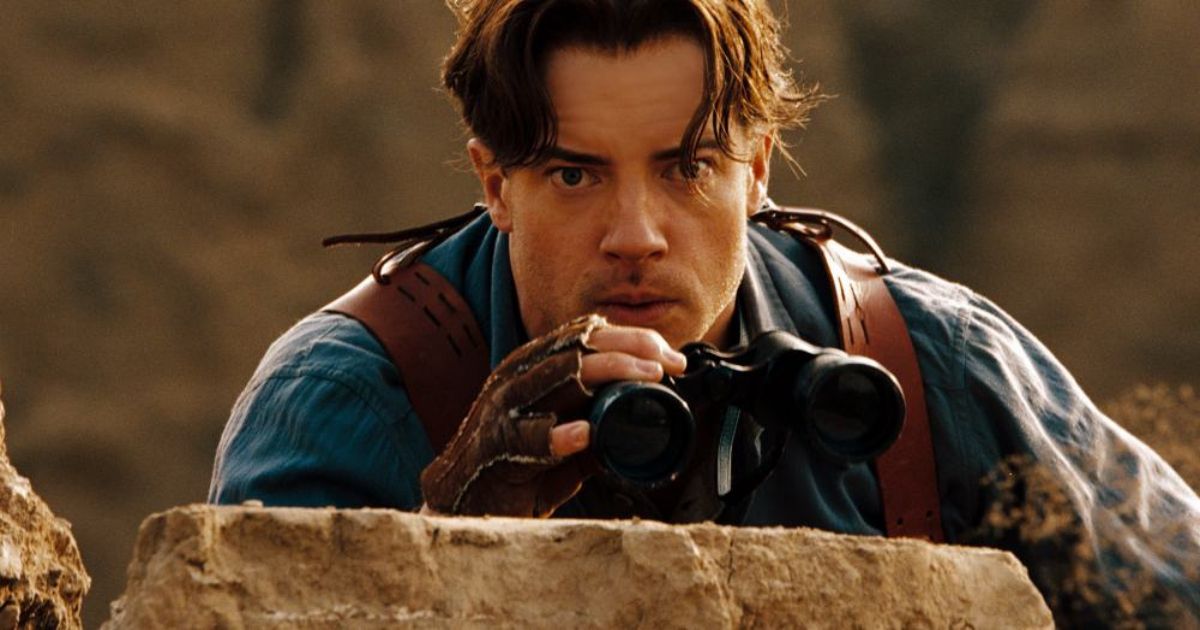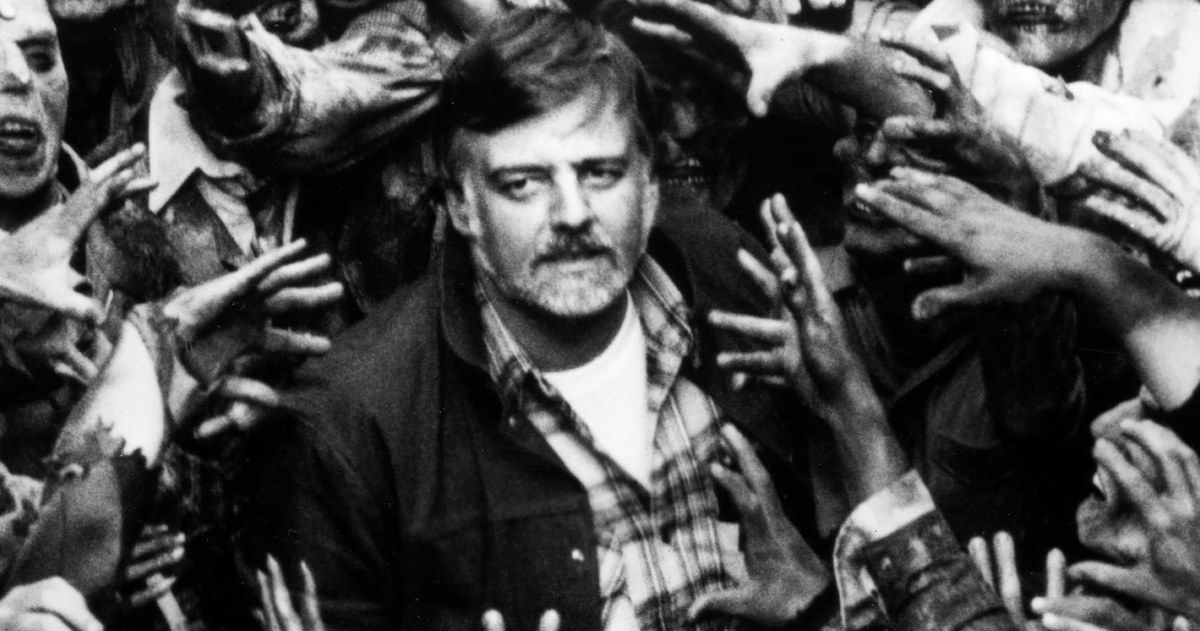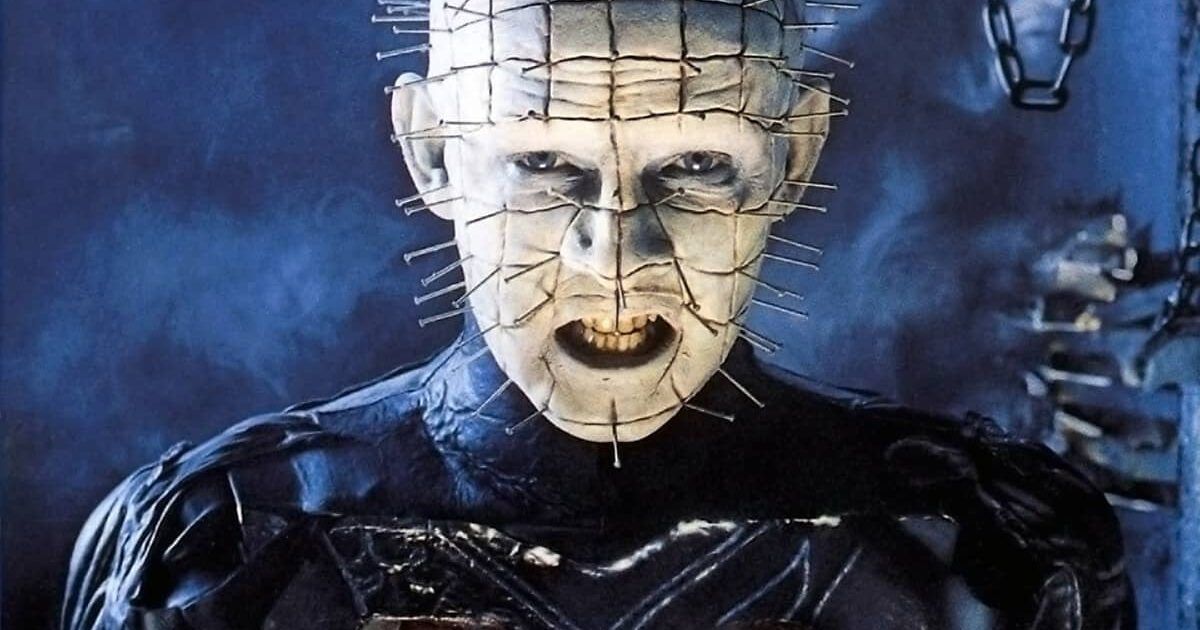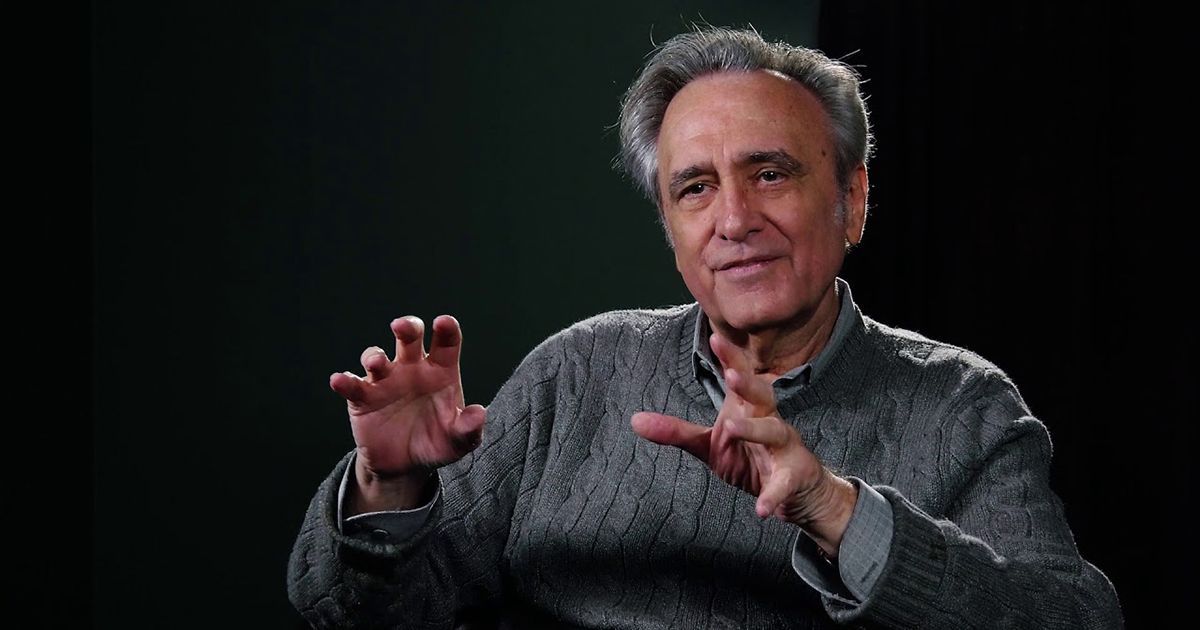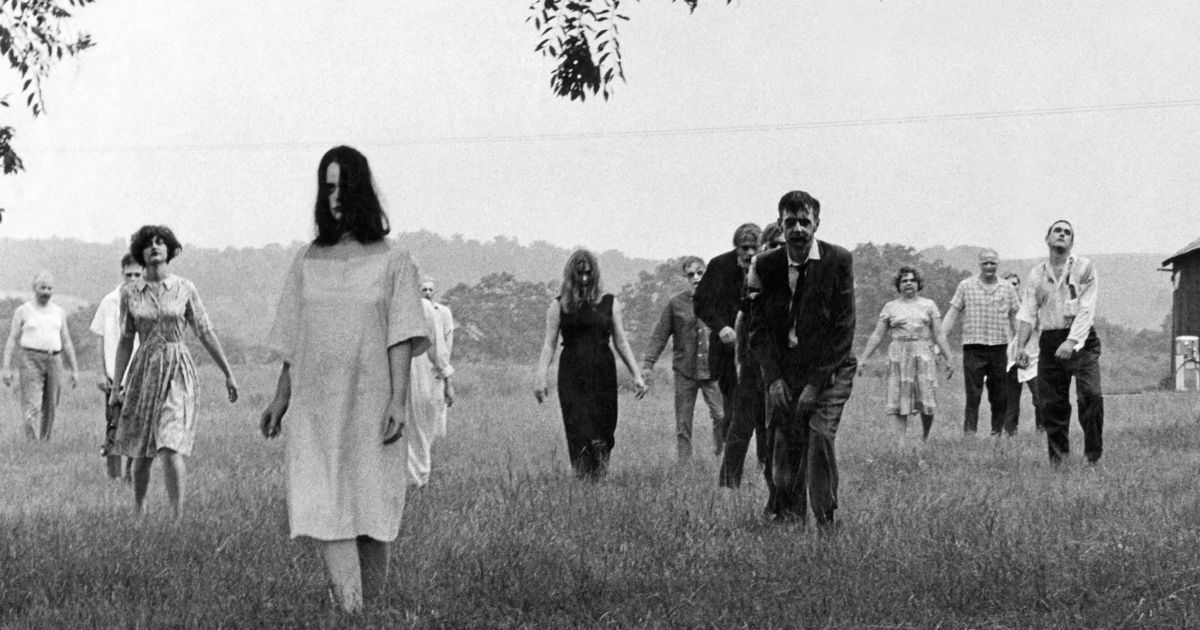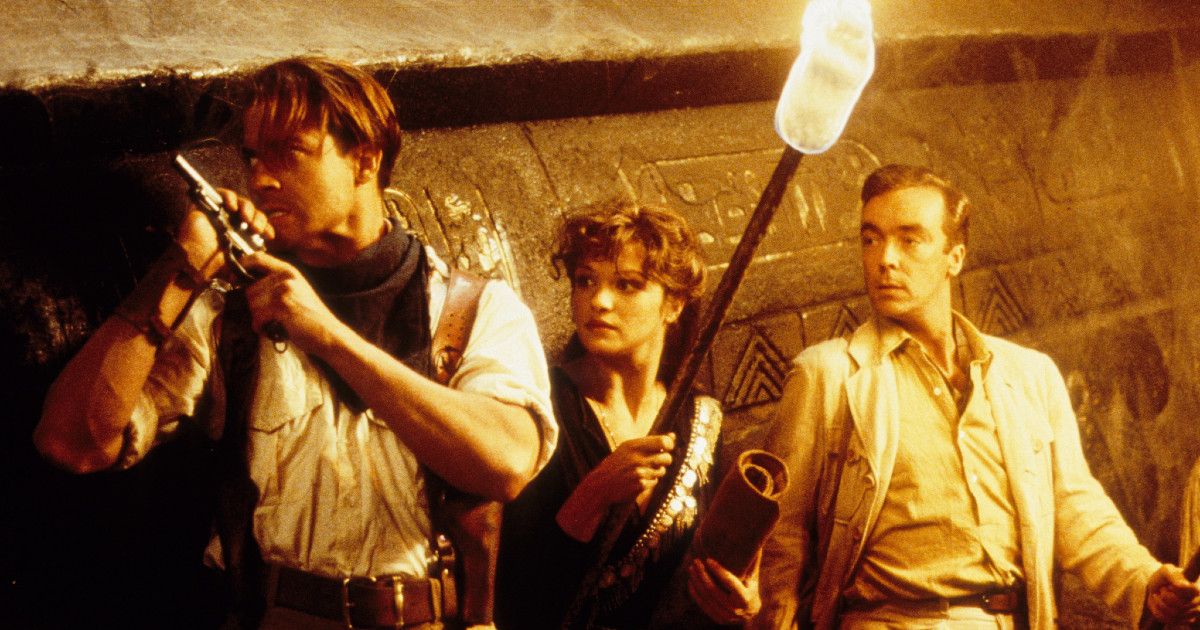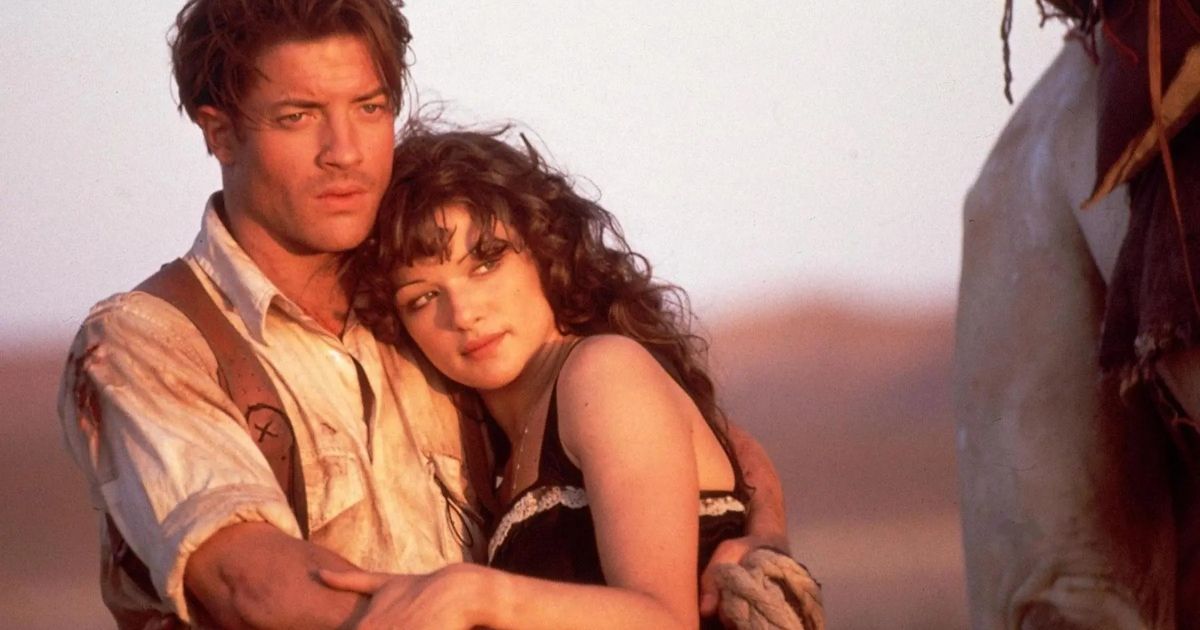In 1999, Universal Studios released The Mummy, a remake of their classic monster movie. Despite hitting theaters just one week before the highly anticipated Star Wars: The Phantom Menace, The Mummy struck a chord with audiences around the world, bringing in more than $400 million dollars at the global box office. Viewers fell in love with Branden Fraser and his charming Rick O’Connell, reminding them of the fun, globe-trotting adventure films that dominated cinemas in the 80.
However, before Sommers boarded the project, producers James Jacks and Sean Daniel had a very different vision for the movie. The Mummy was originally intended to be a low-budget horror movie, and the first entry in a proposed trilogy of films. The two producers spent close to ten years working with multiple directors - including George Romero, Joe Dante, and Clive Barker - but every idea was shot down by the studio for either being too dark or too expensive. Let's take a look at each director's vision for the film and see just how differently The Mummy almost turned out.
George A. Romero Was the First Director Attached to the Picture
After securing $10 million to remake Karl Freund’s classic film, the first director Jacks and Daniel approached was George A. Romero; his background in low-budget horror made him their number-one choice.
Romero's original pitch followed a group of scientists who inadvertently resurrected an ancient Mummy hellbent on wiping out all human life using a mysterious ancient device. According to screenwriter Abbie Bernstein, Romero and Universal began to clash over the direction of the script almost immediately; the studio wanted the mummy to be an unstoppable force akin to the Terminator, while Romero wanted something a little more three-dimensional.
Bernstein later recalled: “[The Mummy] had no more social interaction than the T-Rex did in Jurassic Park.” As a result of the creative differences, Romero quickly lost interest in the project and dropped out.
Clive Barker Was Brought in After Romero Left
After Romero backed out, Jacks and Daniel approached Clive Barker to write and direct the remake. Co-written with Mick Garris, Barker’s take on the material was much darker and violent, with the story set at a Beverly Hills art museum that has been transformed into an Egyptian tomb for a special exhibit. The director of the exhibit, it turns out, happens to belong to an ancient cult intent on resurrecting mummies for nefarious purposes.
As you’d probably expect from the man behind Hellraiser, Barker’s take on the material was bizarre, horrific, and filled with psychosexual undertones (well, overtones really). James Jacks admitted that while Barker’s script would’ve made for a fantastic horror film, the big wigs at Universal ultimately found his vision too weird for mainstream consumption.
Barker expanded on his proposed pitch in an interview with Fangoria Magazine in 2016:
“In the first scene, a strange boy-child is born, under circumstances that suggest something unnatural is afoot. The narrative then jumps ahead 20 years or so, and we pick up the story of how sacred Egyptian artifacts are being brought to America for an exhibition that would put the Tutankhamen exhibit to shame…”
“An uncommonly beautiful woman is threaded into the action, a seducer and murderer of mysterious origin. Of the boy-child, now presumably grown to adulthood, we get no sight. Meanwhile, our antiheroine is seducing her way through the male character, only to be revealed in the third act as the boy-child, now turned via surgery and hormones into a woman.”
“We loved the idea…[but] our creation was not welcomed at Universal, needless to say. The script…was eviscerated by the script readers and our producers. How could we expect to get away with something so weird? Nobody in America, we were told, would accept such a ridiculous premise.”
Joe Dante and Alan Ornsby Had Their Chance as Well
Next on the carousel of horror talent was Alan Ornsby, who was brought on to write a treatment for the film. His original take was more in line with Universal’s original vision for the story; one set in the 1930s and featuring a Terminator-esque Mummy. But then Joe Dante boarded the project, and he had his own vision of the film. Ornsby scrapped his original script and teamed with Dante on a new treatment.
Dante pitched a film centered around a brooding, heartbroken mummy played by none other than Daniel Day Lewis, and incorporated the elements of gothic romance that made Universal’s classic horror movies resonate so deeply. Unfortunately, Lewis’s star power demanded a price tag that Universal was unwilling to pay, and Dante and Ornsby left the project. However, some elements for their script - like the flesh-eating scarabs - carried over into the final film.
George A. Romero Came Back For Another Attempt
Romero took another swing at the material in 1994, this time pitching a zombie-style horror film similar to his groundbreaking Night of the Living Dead.
Set during contemporary times, Romero’s script revolved around Helen Grover, a female archaeologist who discovers the tomb of renowned ancient Egyptian general Imhotep. The story is set into motion when Imhotep inadvertently awakens after being exposed to rays from an MRI scan in a forensic archeology lab.
The script then becomes a fish-out-of-water story when Imhotep, having regained his youthful appearance, recognizes the need to adapt to an alien culture and society. Under the assumption that he works for the Bureau of Antiquities, Helen finds herself drawn into a relationship with Imhotep. Meanwhile, she begins to experience apparent flashbacks to a previous life as an Egyptian priestess.
Imhotep later resurrects his old loyal slave, Karis, whose body had been resting alongside his in the same tomb. After escaping into the city sewer system, Karis embarks on a vengeful rampage against the various criminals and antiquity thieves that had stolen the relics from their tomb.
Based on this summary, it’s hard to say whether Romero’s take on the material would’ve worked. It seems a bit…goofy, for lack of a better word. But he’s the master of horror for a reason, so there's no point in judging the quality of something that was abandoned so early in the development process.
Still, Universal found his version too dark and violent. But the final nail in the coffin was scheduling: because Romero was unable to get out of a prior contract, he was unable to direct the picture. Universal was then forced to cut ties with him and his script.
Mick Garris Took Another Shot at Writing the Script
Garris returned for another crack in 1995, drafting a new script that combined elements of the 1932 film and 1942's The Mummy's Tomb. His script was a period piece replete with fanciful Egyptian art-inspired production design. The vision once again proved too expensive for a studio only willing to spend $10 million on one of their most prized intellectual properties (at the time).
The setting was updated to modern times, which brought the budget down. For the first time, it seemed like The Mummy was close to entering production (finally!) But then Universal was sold to Seagram - yes, the soft drinks company - and all plans for the remake were shelved.
Stephen Sommers Saves the Day
This revolving door of writers and directors continued until 1997, when Stephen Sommers contacted Jacks and Daniel with his own pitch for the movie: a romantic adventure infused with horror elements akin to the Indiana Jones franchise. The mummy, rather than being the film’s central character, was to be the antagonist, and it was going to be “faster, meaner, and scarier” than every iteration of the character that has come before. Despite a proposed budget of $80 million dollars, Universal loved the pitch so much they greenlit the movie.
Jacks began the casting process, reaching out to the likes of Brad Pitt, Matt Damon, Ben Affleck and (ironically) Tom Cruise before landing on Branden Fraser for the role of Rick O'Connell. What seemed like a cursed project finally entered production, and the rest is history.
The success of the first movie led to two sequels: the more successful Mummy Returns in 2001, and the less-successful Tomb of the Dragon Emperor in 2008. Although a fourth film was slated for production, it was scrapped in favor of Tom Cruise's 2017 maligned reboot.
The Future of the Franchise
As of now, there are no plans to release another Mummy movie anytime soon. (Tom Cruise certainly wants no part of it). But thanks to Branden Fraser’s recent career resurgence, there remains a glimmer of hope that he will return to the franchise, alongside John Hannah and Rachel Weisz.
It’s worth noting, however, that even though he’s expressed interest in returning to the franchise, making the original movies was absolutely brutal on Fraser: he suffered numerous injuries across the three productions and almost died in one stunt gone wrong. These injuries directly led to a number of surgeries that kept Fraser in and out of the hospital for a good seven years, and was a big reason for his absence from films over the last decade.
Nevertheless, his love for the franchise is a promising sign that we’ll see a new Mummy sometime soon. Hopefully it doesn’t take another ten years.

